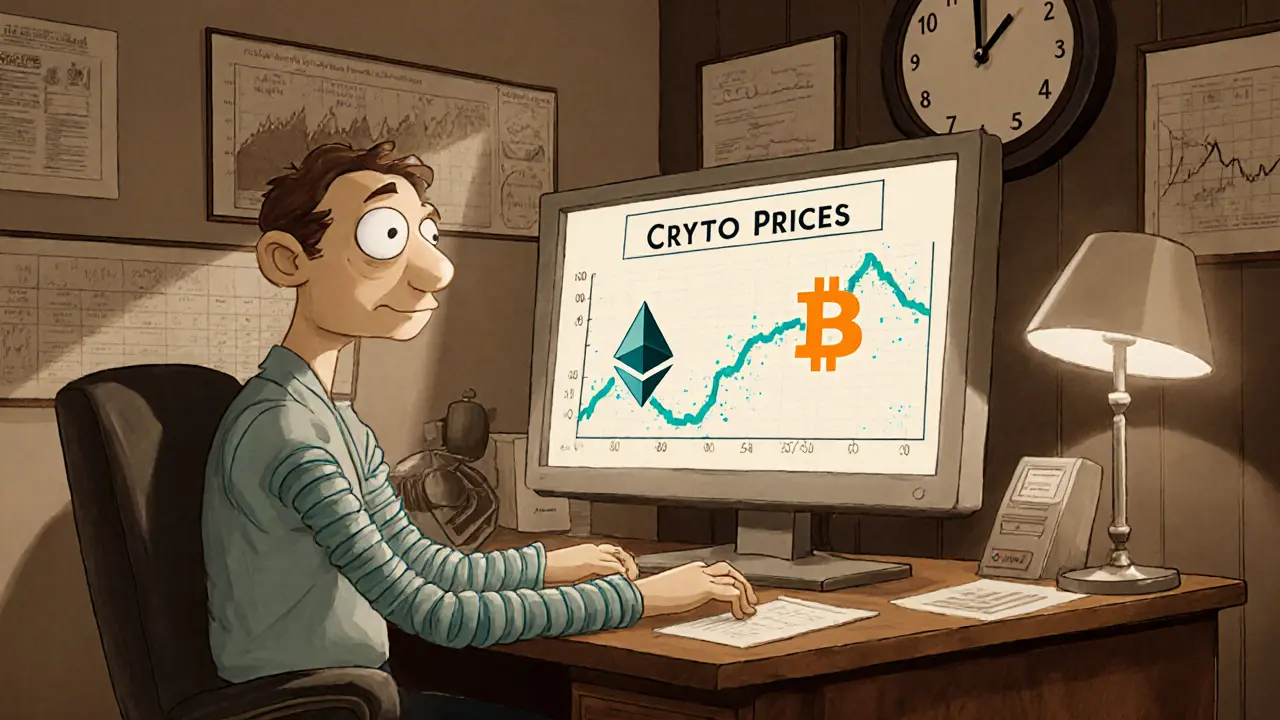Ethereum volatility
When talking about Ethereum volatility, the rapid price swings and fee fluctuations seen on the Ethereum network. Also known as ETH price swings, it reflects how market sentiment, on‑chain activity, and network upgrades interact in real time. The rollercoaster feel isn’t just hype; it’s driven by concrete mechanics like transaction demand, miner rewards, and protocol changes. Below you’ll see how these pieces fit together and why they matter for traders, developers, and anyone holding ETH.
Key factors driving Ethereum volatility
First, Ethereum, the world’s second‑largest blockchain by market cap. Its broad ecosystem—DeFi, NFTs, gaming—creates constant flux in usage patterns. When a hot DeFi launch spikes demand, gas prices climb, pushing users to adjust transaction timing or pay higher fees. This surge feeds back into price as traders react to network congestion.
Another crucial piece is priority fees, the optional tip miners receive to prioritize a transaction under EIP‑1559. Users can boost their tip to speed up confirmation, especially during peak loads. The higher the tip, the more miners earn, which can influence short‑term ETH price as speculative traders chase faster execution.
These dynamics form a clear semantic triple: Ethereum volatility encompasses priority fees. Likewise, priority fees require miner tips, and miner tips influence transaction speed. Together they create a feedback loop where fee markets and price swings push each other.
Understanding EIP‑1559 is also vital. Launched in 2021, this upgrade split fees into a base fee (burned) and a tip (paid to miners). The base fee adjusts automatically to smooth out congestion, but sudden demand spikes can still cause the tip to jump, sparking brief price surges. This mechanism shows how protocol design directly shapes volatility patterns.
Gas fees, the cost to execute contracts, are the most visible symptom of volatility for everyday users. When gas hits double‑digit dollars, some traders pull back, causing short‑term price dips. Conversely, a dip in gas can reignite activity, pushing price up. Monitoring gas trends gives a practical edge for timing entry and exit points.
Beyond fees, market sentiment swings with macro news—Regulatory moves, exchange listings, or major airdrops. For example, a new airdrop on a popular DEX can flood wallets with tokens, prompting rapid swaps that move ETH price. The posts in this collection cover such events, from airdrop mechanics to exchange reviews, giving you a fuller picture of what triggers volatility.
When you combine these elements—network demand, priority fees, EIP‑1559’s fee model, and external market events—you get a multi‑layered view of why Ethereum’s price can swing wildly in a single day. Each factor is a lever you can watch or adjust in your own strategy.
Below you’ll find a curated set of articles that break down each component: how seed phrases keep your assets safe, where to find the latest airdrop opportunities, deep dives into fee structures, and reviews of exchanges that impact trading costs. Use these resources to spot patterns, manage risk, and make smarter moves in a market that never sleeps.

How to Analyze Historical Volatility of Bitcoin, Ethereum & Top Cryptocurrencies
Caius Merrow Oct, 16 2025 15Learn how to measure and use historical volatility for Bitcoin, Ethereum and other major cryptocurrencies. Understand calculation methods, tools, trading tactics, and future trends in a clear, practical guide.
More Detail